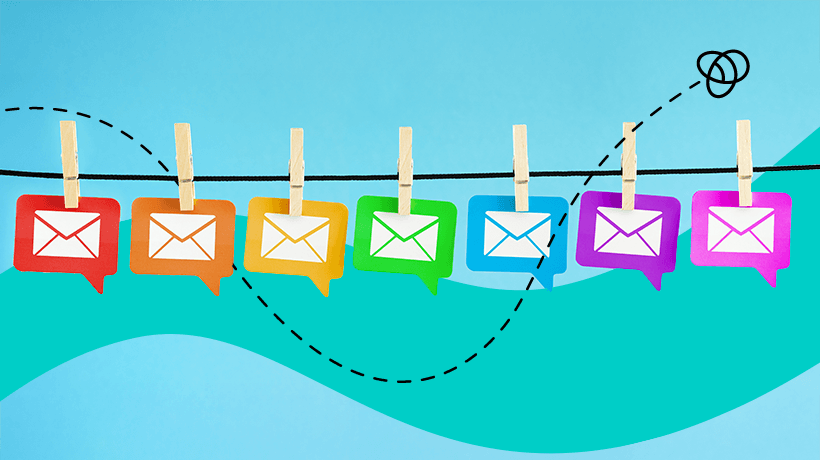Marketing Tips To Apply In eLearning
Let's face it, there are some eLearning courses that leave learners feeling bored, frustrated, and irritated rather than inspired. Whether they don't give learners enough credit (intellectually speaking), or they fall short when it comes to stressing the real world benefits. Either way, the simple truth is that these eLearning courses won't provide any real value to them. Fortunately, there are various marketing tips to apply in eLearning that can in fact transform any eLearning course into an amazing and unforgettable eLearning experience.
- Always remember the motivation behind the eLearning course.
There's a reason why learners are participating in your eLearning course. It could be that they want to develop a specific skill or that they need information to achieve their professional goals. Whatever the case may be, you need to remember their source of motivation and their specific learning and performance goals when you're designing the eLearning course and its learning activities. When marketers are creating an advertising campaign they pinpoint what the consumer needs, so that they can encourage a particular action. It may be that they are trying to get customers to buy a car by targeting their need for a dependable means of transportation, or to sign up for health insurance by capitalizing on their fear of excessive medical bills. In essence, marketers want people to do something by figuring out what they need and want. Likewise, eLearning professionals want learners to acquire certain information or change certain behaviors. As such, we need to determine their motivation for taking the eLearning course in the first place through surveys, research, focus groups, and interviews. - Don't underestimate their intelligence.
One of the worst mistakes that a marketer can make is assuming that customers lack intelligence. Likewise, eLearning professionals should keep in mind that learners want to feel as though they're being respected and given some credit for the knowledge they have already acquired. So, when developing your eLearning course, let your learners arrive at their own conclusions, let them explore their own assumptions, and don't automatically assume that they need to be taken by the hand and led through the entire eLearning experience. This way your learners will be more willing to engage in the learning process, because they will be aware of the fact that they have some control over it. - Give your eLearning course a personality.
By giving your eLearning course character and personality, you gain the ability to transform a bland and dull eLearning experience into something truly remarkable and engaging. If your learners are met with an abundance of text boxes and poorly created graphics when they access your eLearning course, boredom will probably prevent them from becoming active participants. On the other hand, if you create emotionally-centered stories, gripping images, background audio, and relatable characters, you've achieved a whole new level of eLearning course design. You've gone from static to dynamic. Give your eLearning course a face, a cohesive theme, and a personality that elicits emotion within your learners. Just think of all the successful marketing campaigns that have involved a cute, relatable, or sympathetic character. Now imagine how your eLearning course could benefit from utilizing this age-old marketing strategy. - Add in a healthy dose of unpredictability.
Learners want to be surprised, even those who might claim that they “hate surprises”. They want to be impressed by your eLearning course design and blown away by the quality of the multimedia elements. But, most of all, they want to escape the same dry and dull eLearning courses they have seen in the past. Marketing advertisements will often incorporate the element of surprise to grab the attention of their consumers, so why can't you do the same when designing your eLearning course? Be unpredictable, in moderation, and include a presentation with touches of humor or graphics that are thought provoking. - Connect with your learners.
Above all else, learners want to feel as though you are forming some sort of connection with them. They need you to be optimistic and hopeful that they will succeed, rather than getting the impression that you are criticizing or judging them. If they aren't progressing as quickly as their peers, then try to figure out why, and show them compassion. Marketers don't insult or ridicule customers who don't purchase their products, they run focus groups, they conduct surveys, and they reach out to their market to see why the product isn't flying off the shelves. They realize that it's not the consumer, but their marketing strategy, that needs to change. The same goes for your eLearning strategy. It may be that you need to reach out to them and get that invaluable feedback, so that you can alter your approach or modify your curriculum in some way. This will give you the opportunity to offer your learners the most effective eLearning experience possible and form a connection that turns them into lifelong learners.
These marketing tips to apply in eLearning could bring an element of surprise and excitement into your eLearning course. One last mini-tip that I'd like to leave you with is to avoid being too “salesy”. You are integrating marketing ideas into your eLearning development approach to give learners the opportunity to get the most out of their experience, but they shouldn't feel as though they've just sat through a lengthy sales pitch. Keep it genuine, focused, and always ask yourself how every element of the eLearning course is going to be perceived by your learners.
In addition, you are more than welcome to read the article Key Questions To Effectively Analyze Your eLearning Course Audiences that features 6 key questions you have to ask to effectively analyze your eLearning target audience.
Last but not least, are you looking for ways to extend your eLearning Course's shelf life? In the article, 6 Tips To Design eLearning Courses With Long Shelf Life I'll share some top tips to design eLearning courses with long shelf life, while still offering to your future audience the skill development and invaluable knowledge they need.







